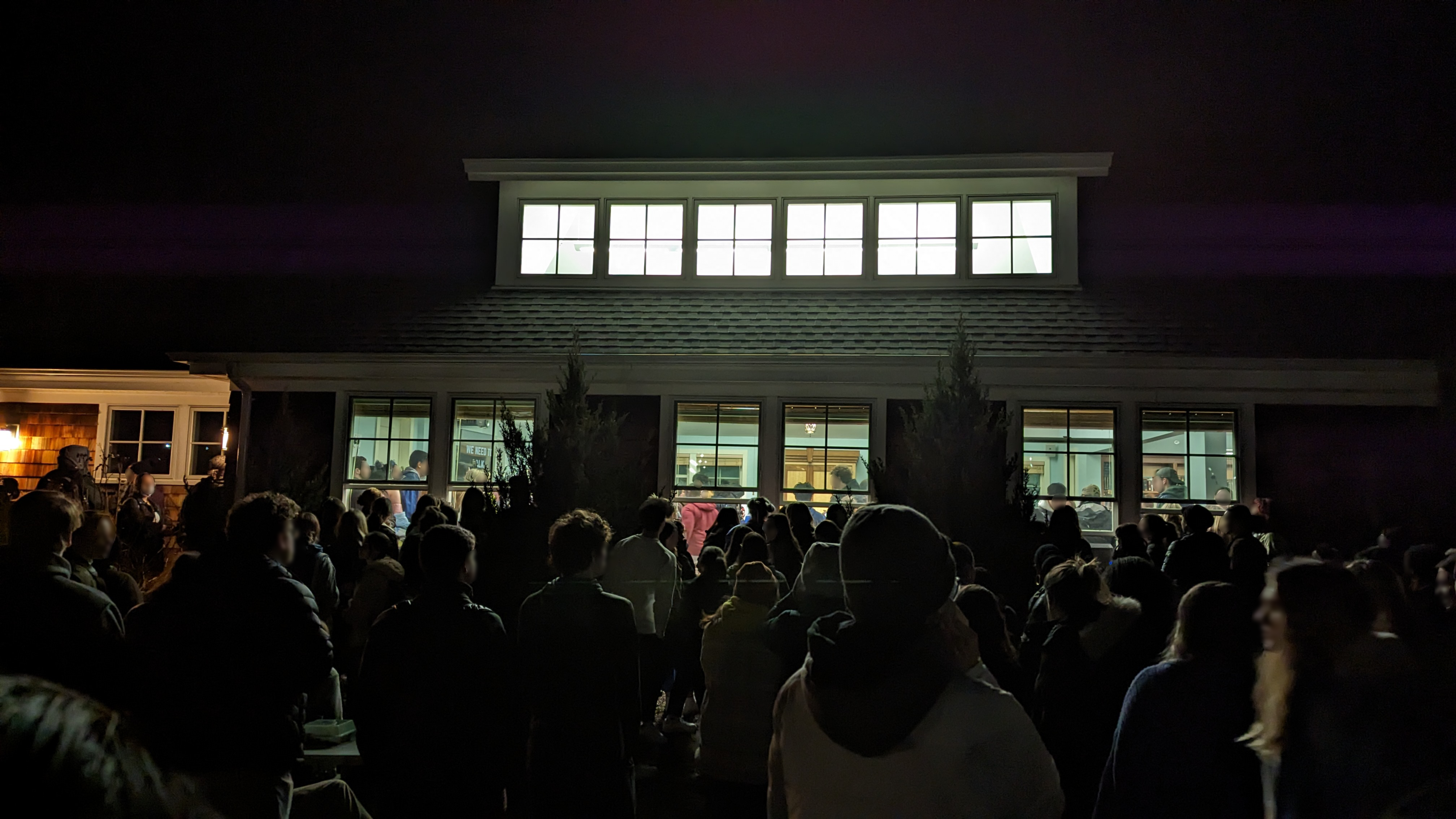You see and hear about it around campus. A mention on a tour, a t-shirt of a popular beer brand modified to include the words “CAMEL SAILING” emblazoned on the front. Yet in spite of this apparent knowledge across campus that our
incredibly impressive competitive women’s and co-ed sailing teams exist, very little is known about the sport, how it works, who does it, and what it’s like, and, frankly how good our team at Connecticut College truly has been over the years and
hopefully into the future.
Last week I was down by Dawley field in the pouring rain, and as I ran past our section of Thames-side waterfront, I noticed that there was a wide variety of vans from schools up and down the East Coast. Teams like Yale, Brown, the US Naval
Academy and Roger Williams, all flocked to the regatta being held right in front of the athletic center. I was impressed, and from that point on I realized that sailing at the collegiate level is no joke, especially when you have a team as good as
Conn’s. I also realized that although we know that we have a great team; many members of the student body have no clue, myself included, how it works at all.
There are two types of boats that the sailing teams use, the FJ and the 420, the latter being named for the length in centimeters of the vessel. Each boat is crewed by two people: the skipper, who steers the boat and operates the main sail, and
the crew member, who operates the jib, the smaller sail. The skipper sits in the back of the boat in order to steer while the crew member sits farther forward in order to operate the jib. The two must work in harmony in order to complete the
race, which is very simple in nature: get to the finish line the fastest.Connecticut College has two teams: a women’s team and a co-ed team. The women’s team goes to women’s regattas across the country, and this squad consists of the top four women sailors, along with two alternates for the team. The co-ed team enters in co-ed regattas of varying levels of competition. Each weekend there are events on all levels of competition.
The courses for the regattas can be circular or can be races from one point to another. The first place boat scores one point, the second place boat two points, and so on. Sailing is scored much like cross-country running and golf, where the low score wins. However, there are many races throughout the regatta, and the point totals are only counted at the end of the regatta by an officiating body known as the race committee. The uncertainty can lead to exciting finishes and race strategy. Each team can only be represented by one boat, but the team crewing that boat may change throughout the course of the regatta. Strong teams may go towards the beginning or at the end, depending on how many points the team needs as the regatta progresses.
The race courses themselves are often set up on a windward/leeward angle, where the boats start off upwind to a certain point, turn around that marker, sail downwind back towards the start, turn around another point, and make that lap a few times, depending on the regatta and course. As simple as this may sound to someone like me, a non-sailor, it is much more difficult than one might think. Wind is not always uniform, and with a number of boats all heading for the same point in the water, there are puff of wind that only certain boats are able to catch. A skipper must read the water and the wind to be able to catch these bursts of wind early enough in the race to stay ahead of the pack of boats behind them. Whole portions of the race course could have no wind at all, so the foresight that the skipper
displays throughout the race is inherently important to the overall position of the boat.
Luckily for the Connecticut College teams, there are plenty of able skippers and crew members to propel the Camel fleet to the top of the pack.
Last week, the women’s team consisting of All-American Atlantic Brugman ’13, Liz Wilsterman ’12, Bitsy Whipple ’12, and Kim Bolick ’15, came in 4th in an intersectional at Brown University. The co-ed team found its strength in Kevin Martland ‘14 and Peter Miller ‘13 along with Ben Bainbridge ‘12, Grace Medley ‘15, Marina Gluckman ‘12, and Katie Andril ‘13.
These teams at Connecticut College are filled with hard-working, skilled athletes that put time and love into a sport that receives very little attention on campus. Conn’s athletic program is buoyed by the continued success of the sailing program. Next time that there is a regatta hosted by Conn, plot a course down to the boathouse to watch some of the best teams in the country do battle with Conn’ s best sailors.









[…] the article here: Conn College Sailing: A Breeze Ahead | The College Voice Be Sociable, Share! […]